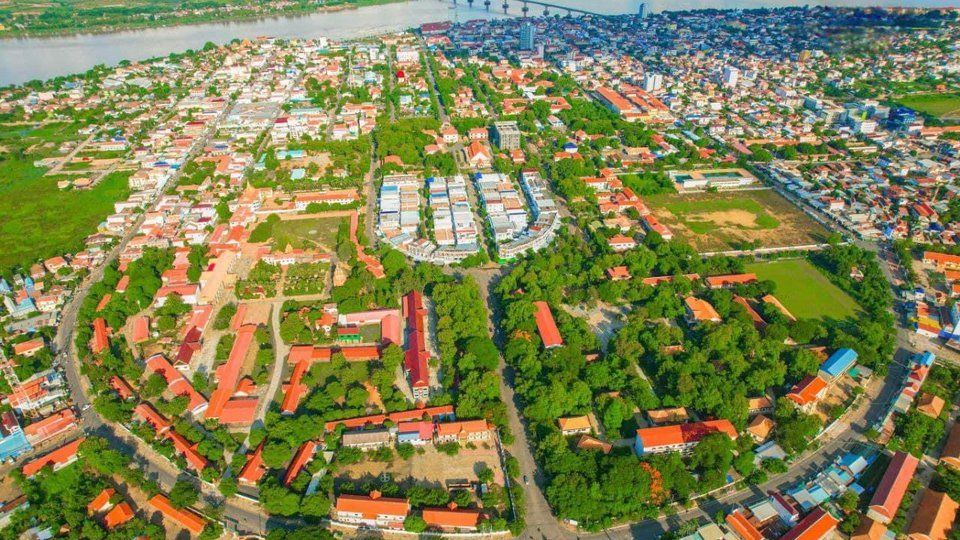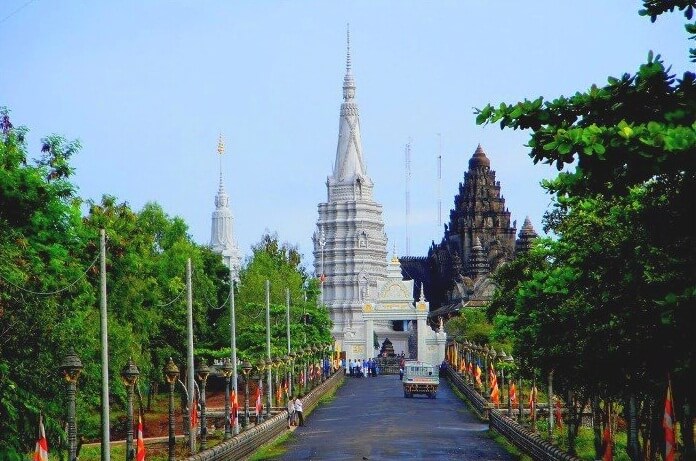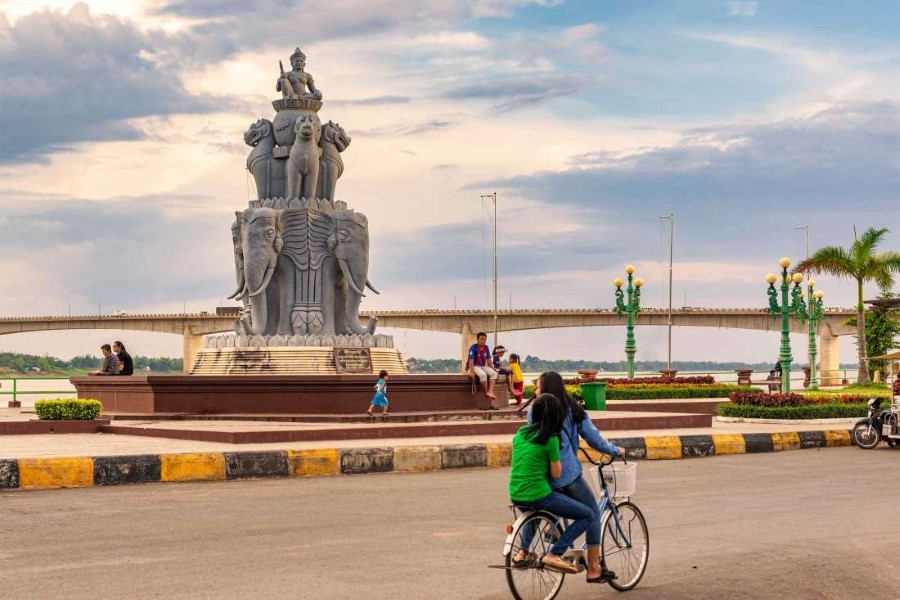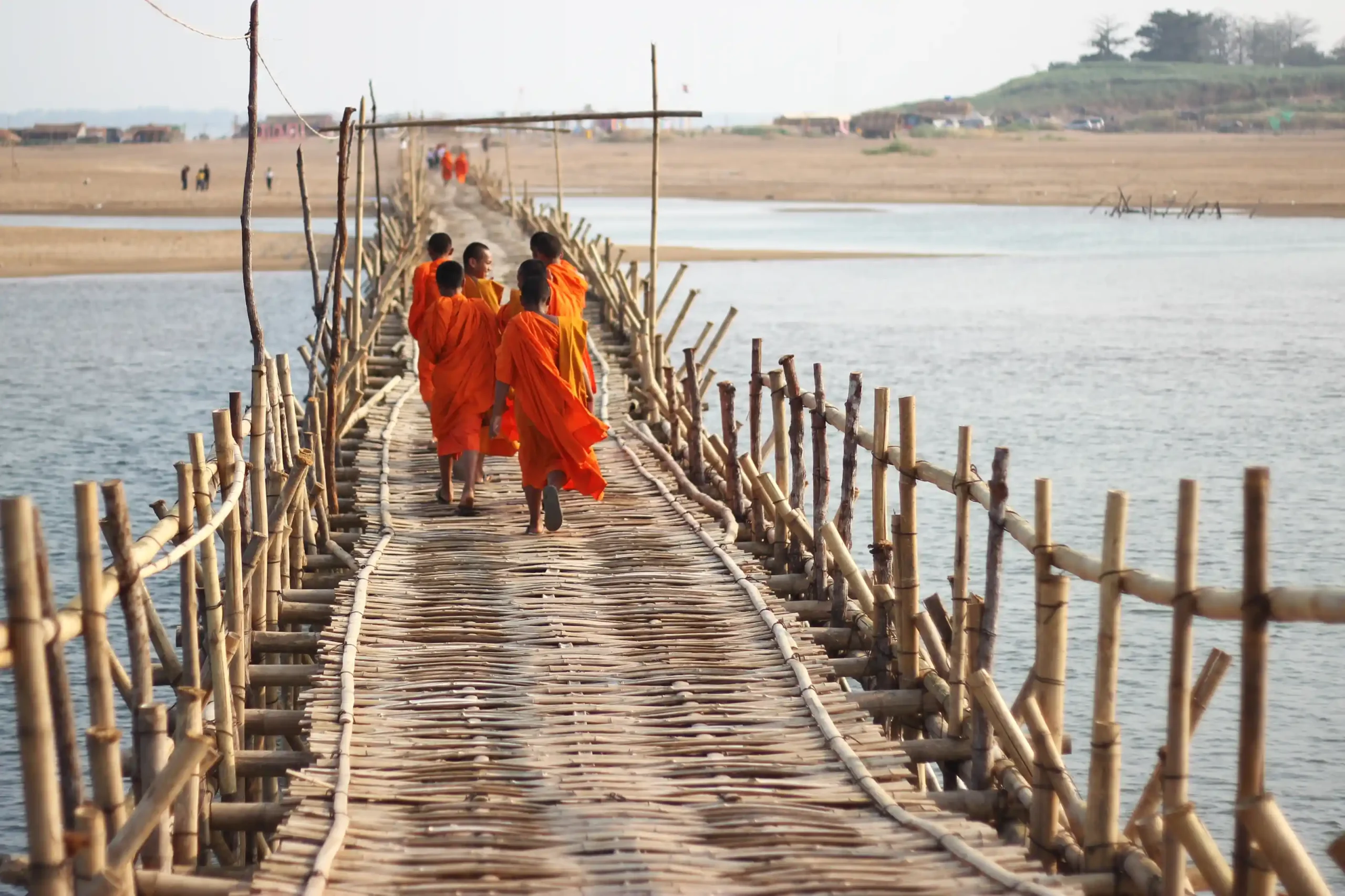Kampong Cham, Cambodia’s third-largest city, is a charming riverside town that blends colonial history, ancient temples, and a relaxed countryside atmosphere. Located along the banks of the Mekong River, Kampong Cham serves as an important cultural and economic hub while offering visitors a more peaceful and authentic experience compared to the bustling capital of Phnom Penh. With its scenic landscapes, historic sites, and warm local hospitality, Kampong Cham is an ideal destination for travelers looking to explore Cambodia beyond its well-known tourist spots.
A Glimpse into Colonial History
Kampong Cham retains much of its French colonial heritage, with well-preserved architecture, wide boulevards, and old shop houses that reflect the city’s past as a trading center. A stroll along the riverfront provides a picturesque view of the Mekong, where visitors can see remnants of French influence alongside traditional Cambodian markets and temples.
One of the most iconic colonial structures in the city is the French Watchtower, which offers panoramic views of the river and surrounding countryside. Although the tower has weathered over time, it remains a popular spot for those looking to capture a glimpse of Kampong Cham’s past.

Ancient Temples and Spiritual Landmarks
Kampong Cham is home to several fascinating temples and spiritual sites that highlight Cambodia’s rich cultural and religious history.
- Wat Nokor: This 11th-century Angkorian temple is one of the most unique in Cambodia. Unlike other ancient temples, Wat Nokor features a mix of old sandstone ruins and a modern Buddhist monastery built within its walls. This combination of ancient and contemporary religious architecture makes it a special place to visit.
- Phnom Pros and Phnom Srei: Known as “Man Hill” and “Woman Hill,” these two sacred hills are linked to a Khmer legend about men and women competing to build the highest hill. Phnom Pros features a large modern pagoda and Buddhist statues, while Phnom Srei is quieter and offers scenic views of the surrounding countryside.
- Wat Maha Leap: One of the few remaining traditional wooden pagodas in Cambodia, this beautifully crafted temple is built entirely from wood and showcases intricate Khmer architecture.

Life Along the Mekong River
Kampong Cham’s riverside setting makes it a great place to experience Cambodia’s natural beauty. The Mekong River plays a vital role in local life, with fishing boats, floating villages, and ferry crossings offering a glimpse into the daily routines of the region’s residents.
One of the most interesting seasonal attractions is the Koh Paen Bamboo Bridge, an impressive hand-built bridge connecting the city to a nearby island. Constructed entirely of bamboo, the bridge is strong enough to support motorbikes and bicycles but is rebuilt every year after the Mekong’s high waters wash it away. During the dry season, visitors can walk or ride across the bridge to explore the island’s traditional farming villages and picturesque landscapes.
For those interested in local agriculture, Kampong Cham’s surrounding countryside is filled with rubber plantations, a legacy of the French colonial era. The Chup Rubber Plantation, one of Cambodia’s largest, offers a fascinating look at the rubber production process and the economic significance of this industry.

A Taste of Local Culture and Cuisine
Kampong Cham’s markets and street food stalls offer a taste of authentic Cambodian cuisine. Some must-try local dishes include:
- Samlor Korko – A traditional Cambodian vegetable soup with fish or pork, flavored with rich Khmer spices.
- Nom Banh Chok Kampong Cham – A regional variation of Cambodia’s famous rice noodle dish, featuring fresh local ingredients.
- Fried Mekong River Fish – Freshly caught fish from the Mekong, often served with spicy dipping sauces and herbs.
The city’s relaxed atmosphere is perfect for sipping Cambodian coffee at one of its many riverside cafés while watching life unfold along the Mekong.
A Gateway to Eastern Cambodia
Kampong Cham is not only a great destination on its own but also a gateway to the lesser-explored eastern provinces of Cambodia, including Kratie and Mondulkiri. Travelers heading further east can experience more of Cambodia’s natural beauty, including rare Irrawaddy dolphins in the Mekong and the rolling green hills of Mondulkiri’s jungles.
Conclusion
Kampong Cham is a city that perfectly balances history, culture, and natural beauty. Whether exploring its ancient temples, cycling through the countryside, or simply enjoying the peaceful Mekong River views, visitors will find a destination that captures the heart of Cambodia’s past and present. With its friendly locals, rich traditions, and scenic landscapes, Kampong Cham is a must-visit for those seeking an authentic Cambodian experience away from the usual tourist trails.




